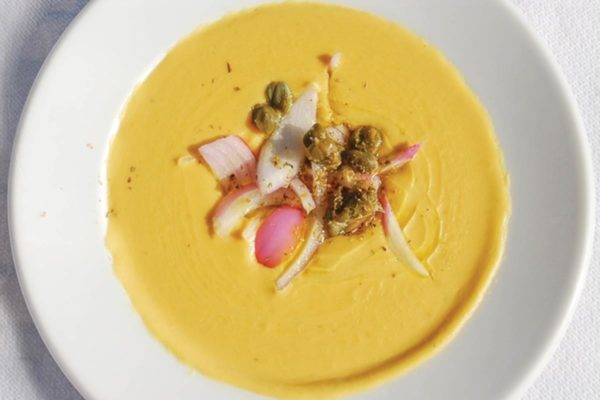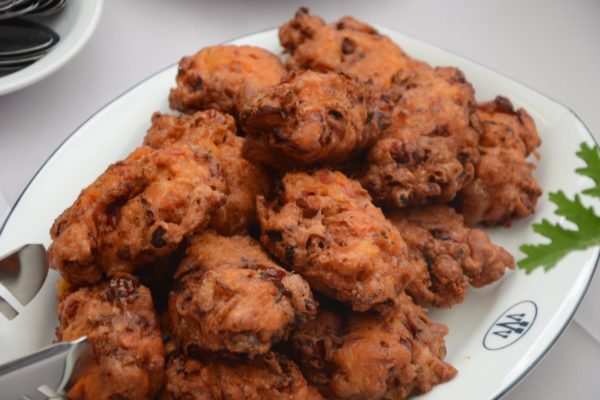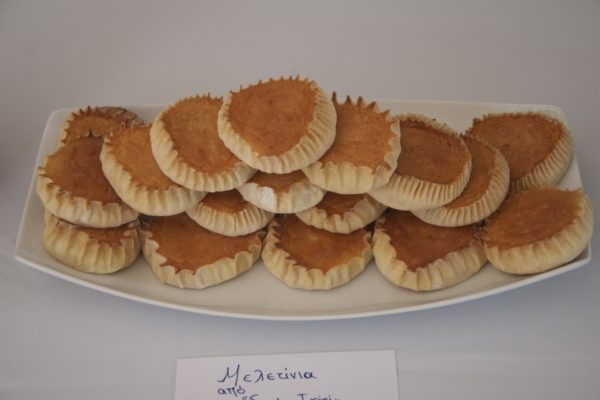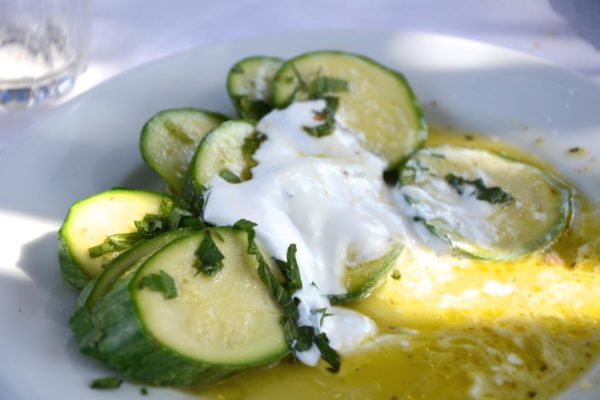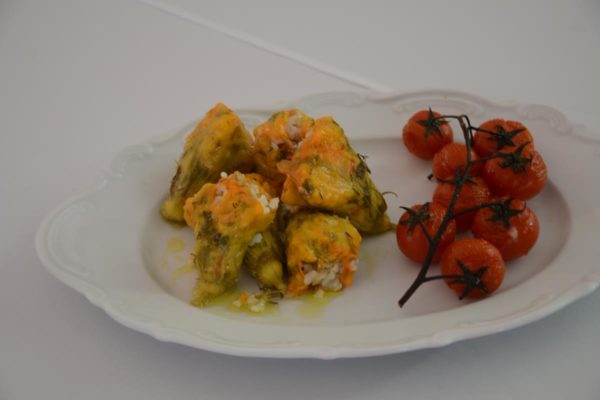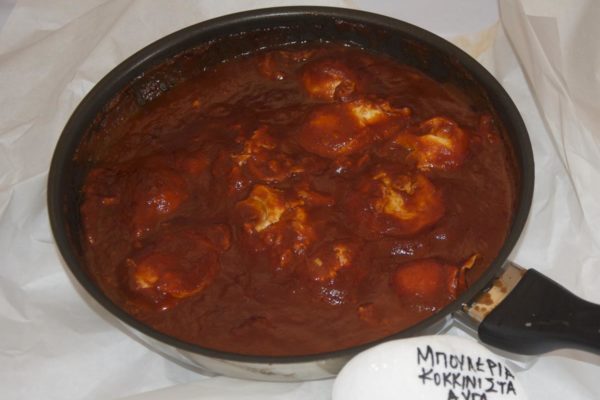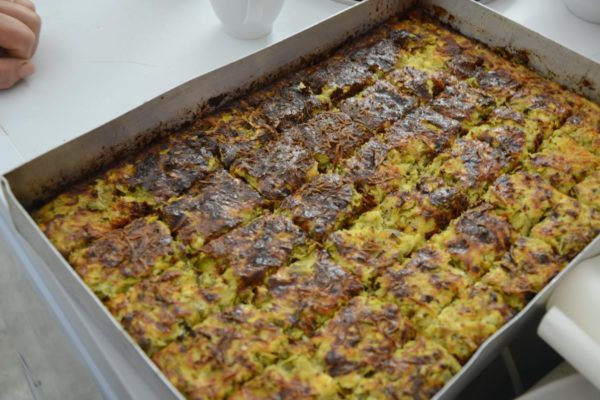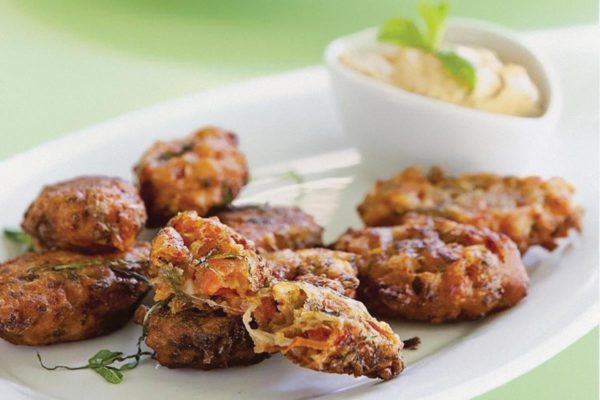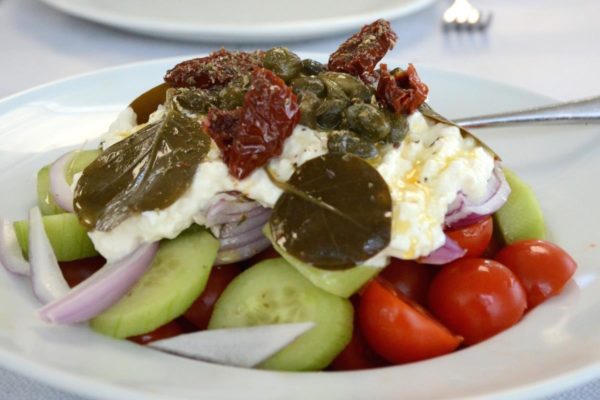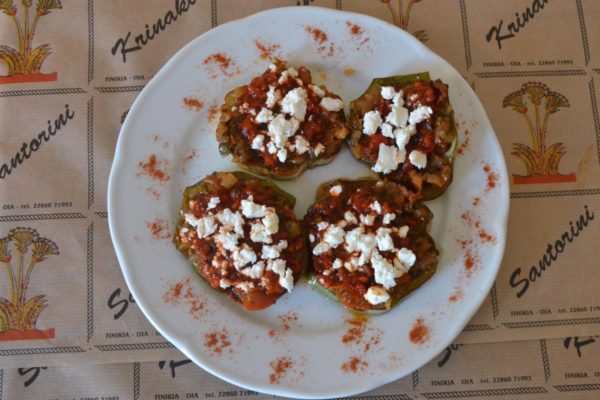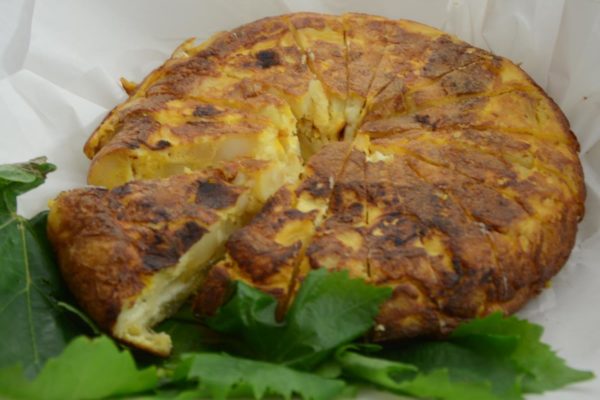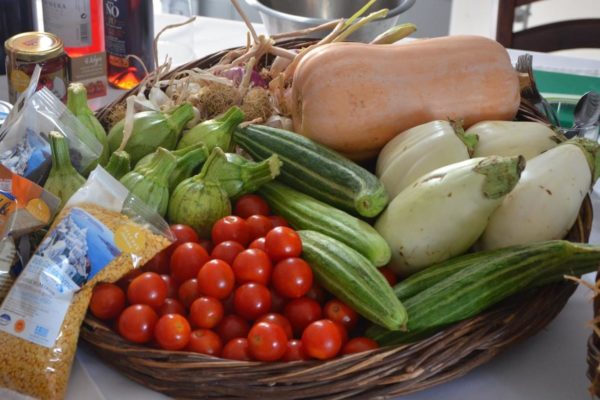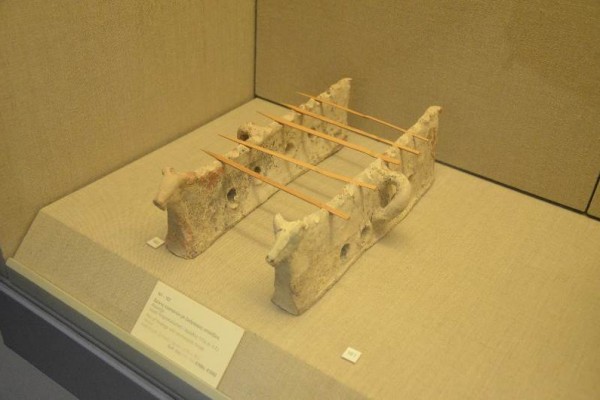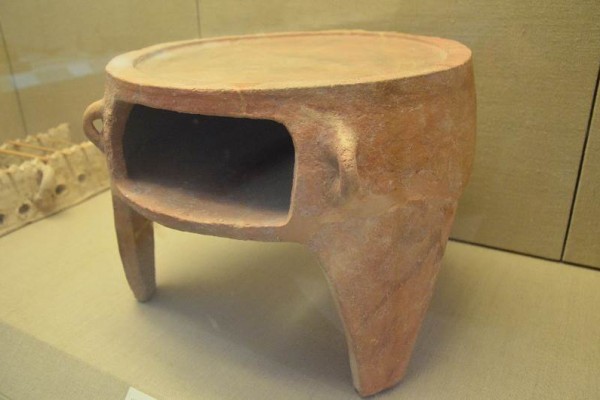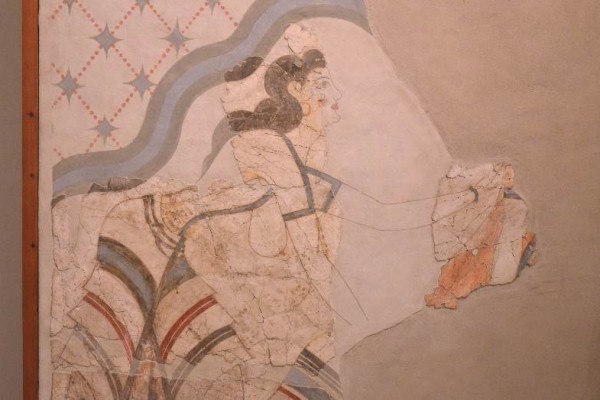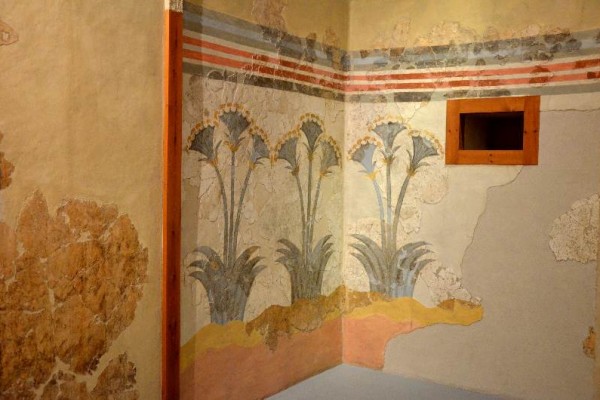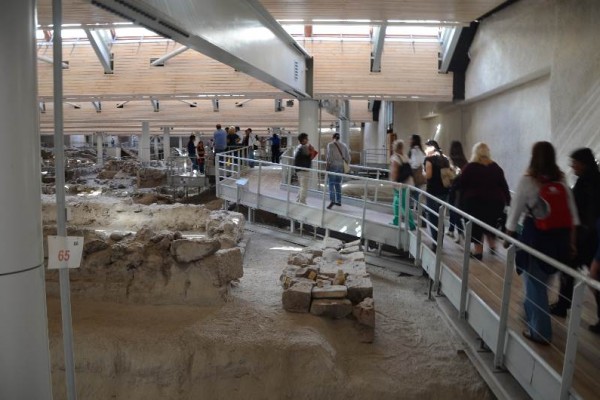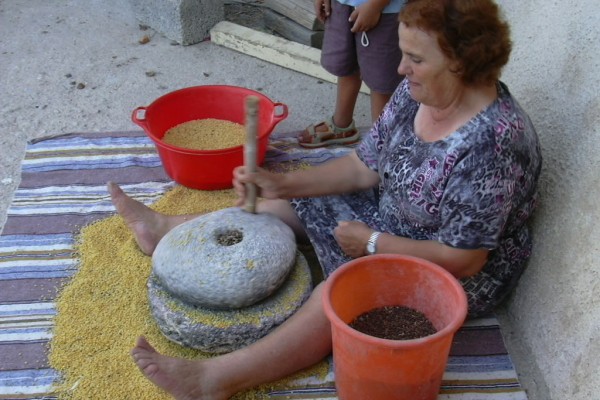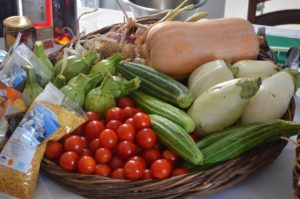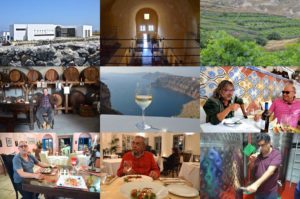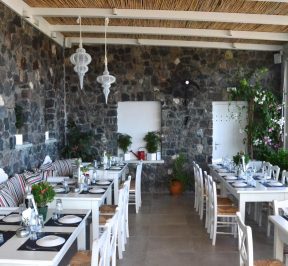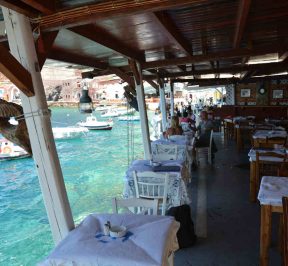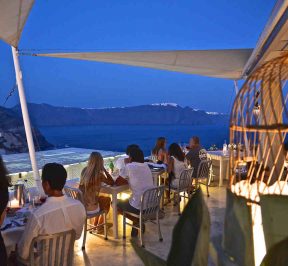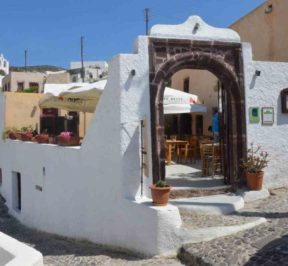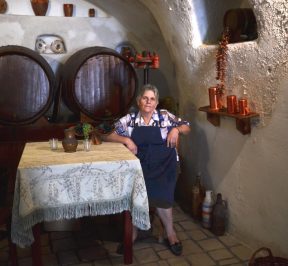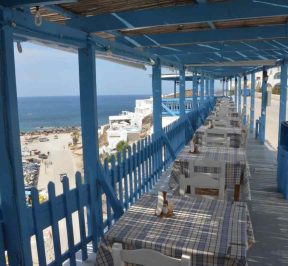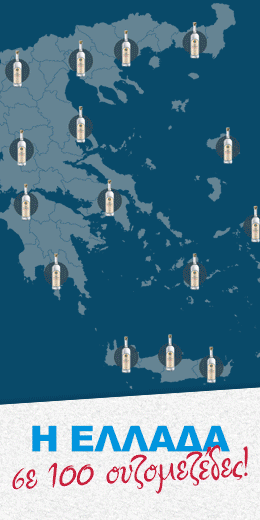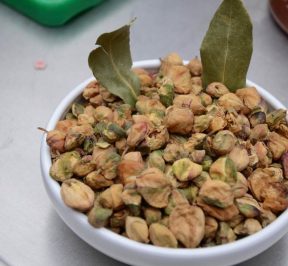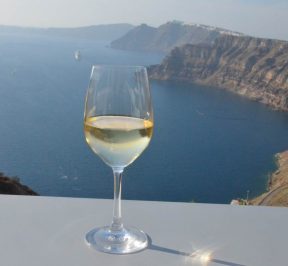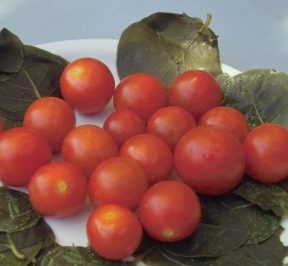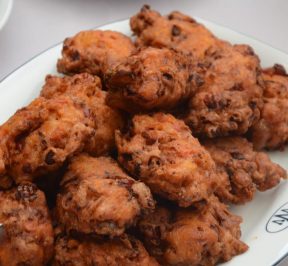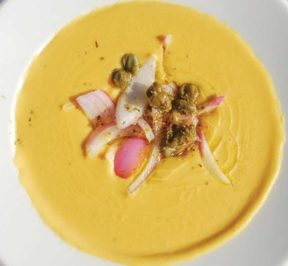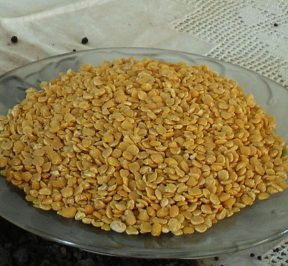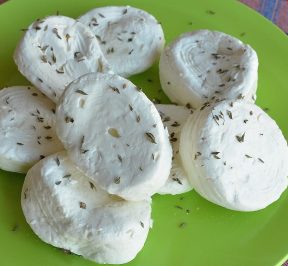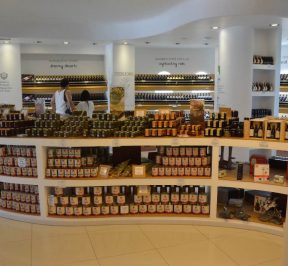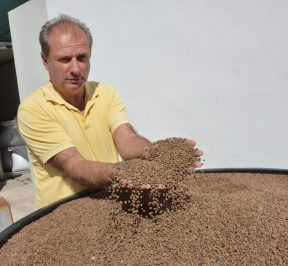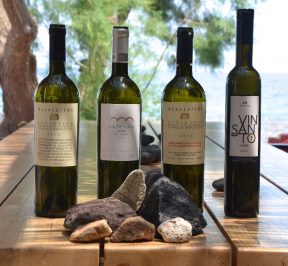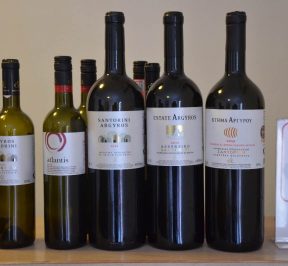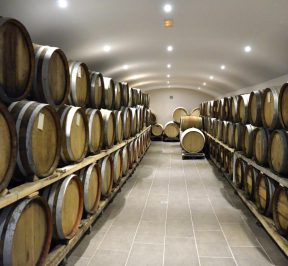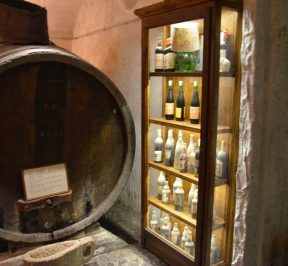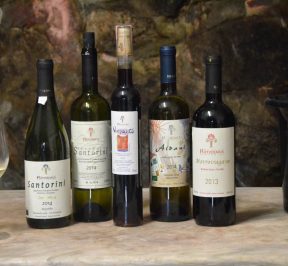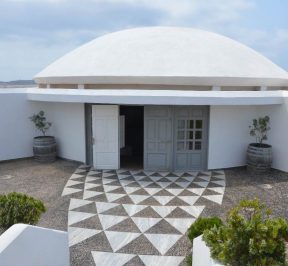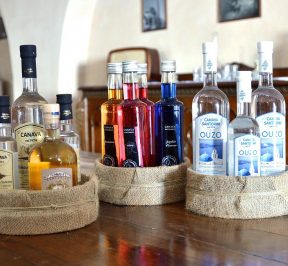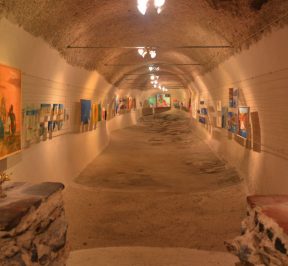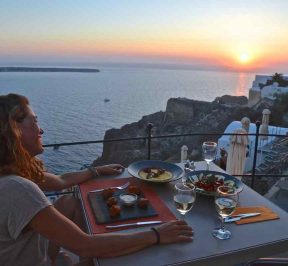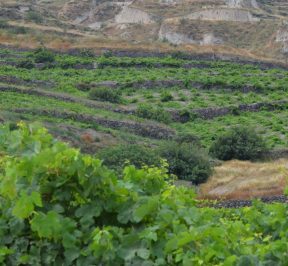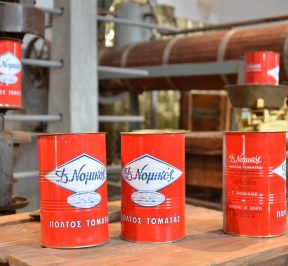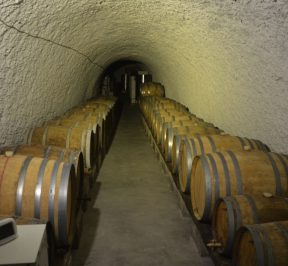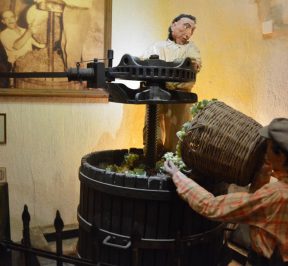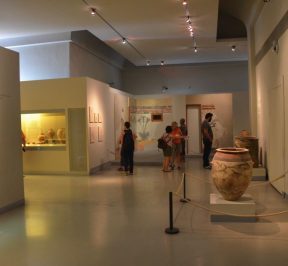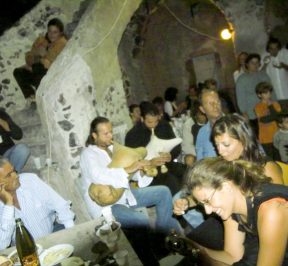Traditional Cuisine of Santorini
Until the 1960s - when the Santorini acquired electricity - and before the beginning of the development of Tourism but also the integration of the Cyclades in the Greek economy through their more frequent connection with Piraeus and Athens, the islands and Santorini were forced to live on their own and eating habits remained same and unchanged as centuries ago.
Fishing, bird hunting, pig and sheep breeding, utilization of agricultural products such as tomatoes, capers and beans. The volcanic soil endowed Santorini with a special range local vegetables (white aubergines, small zucchini, anchovies - local cucumbers), caper and fava beans which are all characterized by their particularly strong taste.
Beyond that, the battle to preserve these foods over time by making pastes, cheeses, rusks and pulps. And of course the struggle of housewives with these limited materials, using their imagination to break the monotony, to create as many as possible flavor combinations.
Until that time, most of the inhabitants were mainly fed on barley bread or barley rolls that were damaged and baked every month, because on the island there were no firewood but only vine branches or fig wood.
Basic legume of the island the split peasOne reason that fava beans were grown in Santorini is that compared to other Cycladic legumes (beans, chickpeas) they cook much faster and thus do not need fuel which was so rare.
Very tasty Santorini cuisine: famous and delicious fava beans in all its versions, fluffy tomato meatballs and pumpkin meatballs, delicious, spicy eggplant salad, juicy sun-dried tomatoes and delicious tomato paste, white fried eggplants, seafood with seafood, seafood.
If many of them traditional recipes, will be found on taverns of the island, in several restaurants the local products find their apotheosis in the hands of young chefs who with a creative spirit and philosophy of renewal of local cuisine offer inspirational and incredible creative imagination dishes.
Those who know, when we talk about modern local creative cuisine or about high gastronomy and island thinking, the mind immediately goes to Santorini. And of course immediately after George Hatzigiannaki, its owner Moon which since 1985, has thrown the slogan - in words but also in practice - in the shift towards the utilization of local products but mainly in its encouragement to other professional restaurants and winemakers for collaborations in order to highlight the Santorini cuisine.
The spirit of this logic slowly permeated several professionals who after many personal and collective efforts - culminating in "The year of gastronomy of Santorini (2014)" - brought the desired results.
Today Santorini has become the absolute gastronomic destination of the country.
Unique agricultural products, innovative restaurants with national and international distinctions, hospitable taverns with local delicacies, visitable wineries with excellent tastings of wines, special local product corners, cooking lessons, gastronomic attractions create a backdrop of unique gastronomic pleasure.
The typical local Santorini delicacies (some less and some more common) are:
Η atherin pie where the atherines are fried in hot oil along with the onions and flour.
Η bloody, a large intestine full of liver and rice.
The acquisition which is the salted pork of Santorini. The thigh is salted and placed in vinegar before it dries in the air. Rub with pepper, cloves and cinnamon. It is related to the apaki of Crete, the convergent of Mani, the noumboulo of Corfu but it does not smoke while as it dries in the air it looks like the Cycladic baths.
Η kopania is a popular Santorini dessert that got its name from the way it is prepared. The barley buns are beaten and mixed with raisins and sesame seeds, and the mixture is made into small balls and sprinkled with roasted sesame seeds.
The rabbit cheesecake: The pieces of rabbit are deep fried with onion, garlic and flour. Then add bay leaves, salt, wine, water and cook in a saucepan. Finally, they are poured with a mixture of egg broth, grated kefalotyri and karasi.
The candy: Honey boiled with roasted almonds. They usually wear it at weddings or when they have an opening.
The meletinia: Traditional Easter cake in the shape of a tray. Place the mixture of mizithra, sugar, cinnamon and mastic on the dough base. It corresponds to the bites, the cheese pies, the lamps of other islands that are variations in almost the same logic.
Ο curly cod which is usually eaten uncooked, cut into small pieces with tomato salad ..
Cod brandy where the pieces of salted cod are fried and then topped with a mixture of dilute garlic and tomato paste sauce with salt and sugar. Bake in the oven for ten minutes and serve hot.
Tomato meatballs. The delicacy of the island and its most common fake meatballs. It is prepared like meatballs from a dough mixed with Santorini tomatoes, onion, pepper, mint, oregano and fried in hot oil.
Stuffed birds: The zucchini flowers, after being cleaned, are filled with a mixture of rice, onion, tomato, mint, grated zucchini, parsley and spices and cooked.
Santorini pudding: Sweet with semolina and milk (the pudding of the poor is made with bread and milk, while the rich with eggs, semolina and chocolate). Served with Visanto wine sauce.
Santorini salad: The salad has been established based on the local products of the island, namely the nuts, the chlorotyri, the tomatoes, the capers and the caper leaves.
Garlic spaghetti: Thick spaghetti drizzled with fried garlic. Food of the popular classes.
Sponge: After frying the zucchini, potatoes and tomatoes in olive oil, throw the eggs with salt and pepper in the pan. Classic dish of Santorini.
Marinated fish: Fish (horse mackerel or anchovies) fried, with vinegar and rosemary.
Grilled fish: Small fish. They put them in the sun for several days until they dry. They usually eat them in winter. They are considered a good meze for wine.
Pseudo meatballs: The meatballs of the poor - who could not have meat - were made from all kinds of greens, legumes. In addition to tomato meatballs in Santorini, fried vegetable meatballs were common, with celery, mint, tomato, zucchini and various other greens, in batter.
Eating habits of Santorini
The Santorini eating habits According to the sources we have, for 4.000 years they maintain the constants of the Mediterranean cuisine, ie the oil, the wheat and wine.
For the prehistoric Thira information on the nutrition of the inhabitants comes from three sources.
The first is the representations in vases and murals of the season. The exquisite murals of the "Little Fishermen" from the western house in Akrotiri, reveal to us fishermen who are fishing with ropes, a fact that indicates the importance of fishing at that time.
Primitive fishing activities are confirmed by our second source which is archaeological finds such as harpoons, hooks, small perforated stones used as weights. From the total number of vessels and jars found, the widespread consumption of wine and oil is confirmed. Two of its most interesting ceramics Prehistoric Museum of Thera It is an extremely elegant little fufu, and a double decorated base consisting of two plates, on which the skewers were placed to be cooked over the embers.
The third source is food residues, The trash, The bones animals, the seeds, The plants. These findings identified the type of catch where most of it appears to have come from small fish.
From the analysis of the bones found we know that livestock was widespread on the island and that goats, sheep, pigs, cattle were raised while hunting provided hares, deer and birds.
At the same time we know that the inhabitants of prehistoric Thira, in addition to fish and meat, ate pomegranates, figs, almonds, olives, oil and legumes, quinces, sea urchins, scallops and horseshoes.
In Santorini stigmas of saffron were collected from prehistoric times. This, after all, was the subject of the "Crocodile collectors", the famous frescoes of the prehistoric settlement of Akrotiri, where female figures barefoot in steep mountains gather the wild saffron of the island.
Three thousand years later, in 1657 AD. the French priest Francis Richard publishes a chronicle of his tours of the Greek islands and gives extremely informative information about the eating habits of the island:
"The daily food of the people is the barley nut and the salted quails of the autumn hunt have as a prey. They bake bread twice a year. It is so black that when I showed it to one of our priests in Naxos, he told me that in France such bread is eaten only by dogs. Nevertheless, the children gnaw it in the morning with a lot of appetite and it is wonderful in their health. With the nuts that some people previously soak in water, they eat their herbs, which are their usual food. Every autumn the inhabitants kill countless passing triangles and quails that stop their migration here. As soon as the birds are finished, the fishing begins. They catch some fish like sardines that they call "griffins". This engagement lasts until May. The poor rarely taste the meat. The rich prepare salted meat once a year. They cut the meat into small pieces, wet it in vinegar, salt it and then spread it on the wall until it dries ".
PLACE & HISTORY - TRADITIONAL KITCHEN
PRODUCERS - WINERY


